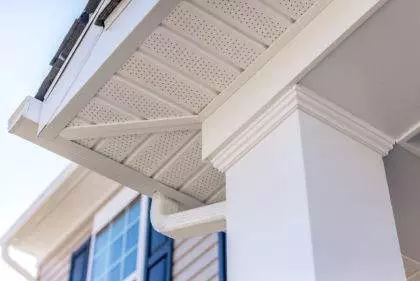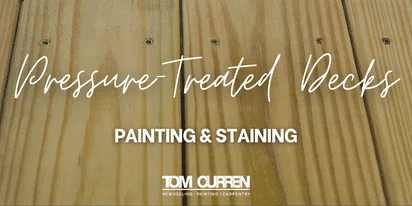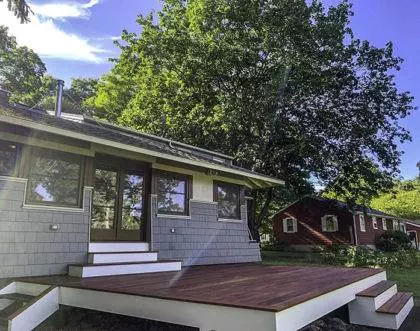When you stain a deck, you’re protecting the wood from ultraviolet sun damage, moisture, and mildew damage—that’s the why of it. The how is almost as simple.
First, remember that you should only stain a deck when the weather is clear and temperate. The stain needs to dry and absorb properly so, of course, avoid beginning this project if the forecast projects any chance of rain. Be aware that extremely hot weather isn’t exactly your friend, either, when staining a deck. A good rule to abide by is this: if your deck is too hot to the touch, it’s probably too hot for the stain to penetrate the wood.
Now that the weather is sorted out, you’re ready for step one: preparing and cleaning the deck. This may seem self-explanatory, but it’s important to remove dirt and debris from between deck boards. A strong-spraying hose nozzle will do in a pinch, and you can use a stiff bristle brush if you hit any particularly stubborn patches. Just remember: the better you clean the deck in preparation, the longer your stain will last without peeling. If you’re looking to restore the wood on your deck, also consider bringing a chemical wood brightener to the task. Assuming you’re dealing with a wood deck, you may want to treat it with a water-repellant coating, many of which come with mildewcide. You know you’ve done the treatment right if, when it’s dry, water beads on it like water on a raincoat.
Keep in mind that weathered decks soak up more stain than new decks, so a second coat may be necessary depending on the condition of the wood. Make sure to check the manufacturer’s instructions on whichever stain you purchase: you’ll need them for both application and follow-up care (i.e. protective coatings before heavy rain, snow, et cetera). Stain your deck right and you’ll save yourself a lot of work later: just sweep up regularly to avoid the build up of moisture-catching residues, and remember to hose it down from time to time. And there you have it: the best practices for staining a deck, and the best practices for keeping it in pristine condition, too.
READ OUR
Related Articles
Locations







